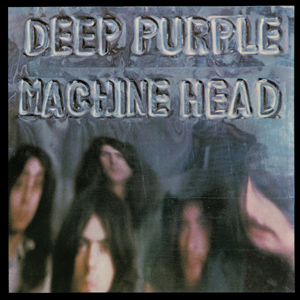Maybe it’s just because I grew up at the right time, or got turned on to both a bit earlier than what might be the norm, but D&D and metal have always gone together for me like peanut butter and Satan. I mean chocolate. But, really, what personifies the heart and soul of E.T./Reagan-era AD&D more than a bunch of denim-girded teenagers listening to Ride the Lightning and slaying their way through the Deities & Demigods? White hi-tops and Chessex golf ball d100s and bong hits in the basement. I can see it now.
And it’s easy to see metal’s influence on D&D’s players (and, arguably, metal’s album covers on D&D’s artists), if not necessarily on its initial creators. (Not sure Gary was much of a Slayer fan.) Fantasy permeated the music of proto-metal bands such as Black Sabbath, King Crimson, and (as perhaps best articulated by superfan Brock Samson) Led Zeppelin.
“Listen to those lyrics, man. That song's about love, and longing... yes, and hobbits. Look, it's a metaphor!” – Brock Samson
The New Wave of British Heavy Metal (yes, caps are necessary) brought fantasy- and history-inspired bands like Iron Maiden, Saxon, and Grim Reaper to US orc massacrists. New York power metal pioneers Manowar rocked the full barbarian garb and sang about swords and shit.
Perhaps most telling is that both were at the center of the ‘80s moral panic craze. (Start one today!) Apocryphal stories of devil worship, drug use, human sacrifice, and naked boobs on album covers (or Monster Manuals) were traded over Twinkies and Tab at countless PTA meetings, and the moms and pastors of America got organized (and annoying). Our multifaceted and finely-nuanced culture was undoubtedly enriched by the addition of backwards Ozzy and Priest records and super-well-researched Chick tracts.
(Blackleaf – NOOO!) Of course, all of this, in reality, contributed to more cross-pollination between the two camps than before. “If you already think swords and demons and pissing off your folks are pretty cool, then here’s another hobby for you!”
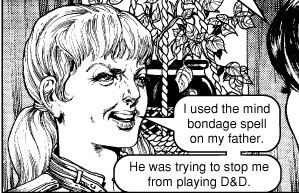
And then at a certain point, the pendulum started to swing the other way, although it’s tough to pinpoint exactly where.
Bathory (and sole member/multi-instrumentalist Quorthon) came out of Sweden with a raw, thrash-influenced sound (almost single-handedly creating the genres of black metal and, shortly after, Viking metal). The lyrics were clearly influenced by the folk tales and legends of the Norse people, but I think it’s tough not to see a good bit of Gygax’s touch in songs like A Fine Day to Die and One Rode to Asa Bay. There’s a certain longing for adventure in Bathory’s music that rings damn familiar to me, and I’m pretty sure that’s why.
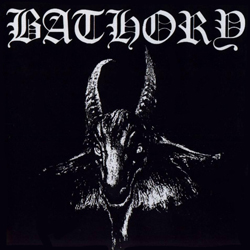

In Norway, while second-wave black metal pioneers Mayhem were still evolving their signature sound, the members of Old Funeral were running around in the woods ‘til 4 in the morning whacking each other with swords and tackling the Temple of Elemental Evil. Count Grishnack (later Varg Vikernes) would leave Old Funeral to form the vastly influential black metal project
Burzum. Vikernes acknowledges the influence T1-4 had on the covers of his early records, and how playing AD&D and MERP would influence the concepts that led to Burzum. (
"A Burzum Story, Part I")
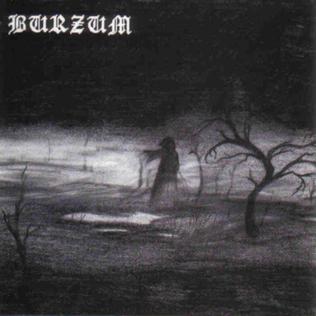

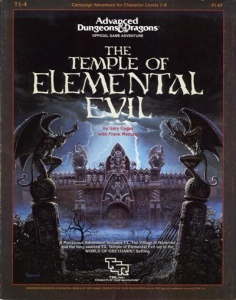
Meanwhile the remaining members of Old Funeral would found
Immortal, whose lyrics mostly deal with a a frozen, wintry hellworld called
Blashyrkh.
Blashyrkh mighty be your name victorious a kingdom we made
with strength and pride all the way you are at the heart of winter
The statue watches the kingdom your giant wings make all beneath
I'm staring forth the raventhrone I know I'm at the heart of winter – Immortal, “At the Heart of Winter”
You do the math.


90s power metal act
Blind Guardian would bring a number of innovations to the genre, but they also wore their nerd influences on their sleeves (with songs about wizards and elves and an entire freakin’ Silmarillion concept record) and name-check Dragonlance in their lyrics.
Bolt Thrower created a dirge-y, grind-influenced death metal sound, but the band were also gamers in the UK – Warhammer players – and managed to work out a deal with Games Workshop allowing the band to use Warhammer 40K art for the cover and 40K concepts in the lyrics on their debut album. US folk/power metal outfit
The Lord Weird Slough Feg (shortened to simply “Slough Feg” as of late) take their name from a character in the very metal 2000AD comic
Sláine(featuring the exploits of the Celtic barbarian of the same name), while their lyrics deal with a number of gaming-related topics (with song titles like "Troll Pack") - hell, they actually have a Traveller concept record.

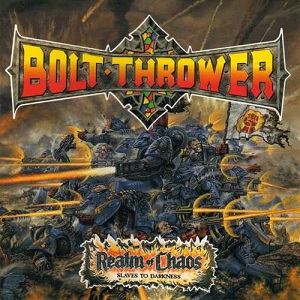

Finally, Richmond, VA’s
Battlemaster are purely gaming metal. Their debut record is entitled “Power Word: Kill,” and has a big’ol d20 on the front, song titles from their releases include “Dungeon Crawl” and Undermountain.” Swedish-style melodic death with lyrics about critical hits, mind flayers and liches. No fucking around, here.
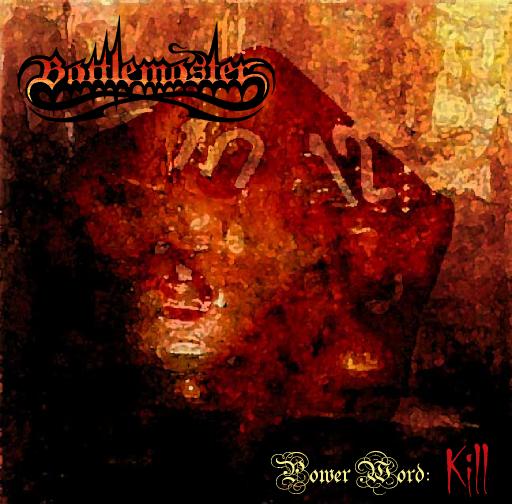
I’m skipping a million other bands (look up
Battlelore for a laugh sometime), but you get the picture.
Speaking of D&D in metal, I’ll be running tonight for a couple of guys in the band (one of which has played already – once – and has apparently been practicing on Baldur’s Gate II, hahaha) and some other assorted Worcester ruffians. Finishing one-page template version of the main Level 1 hub today, and laying out my DM pack so (in theory) I’ll be ready for whatever they throw at me. Should be a blast or several.
DYA

















